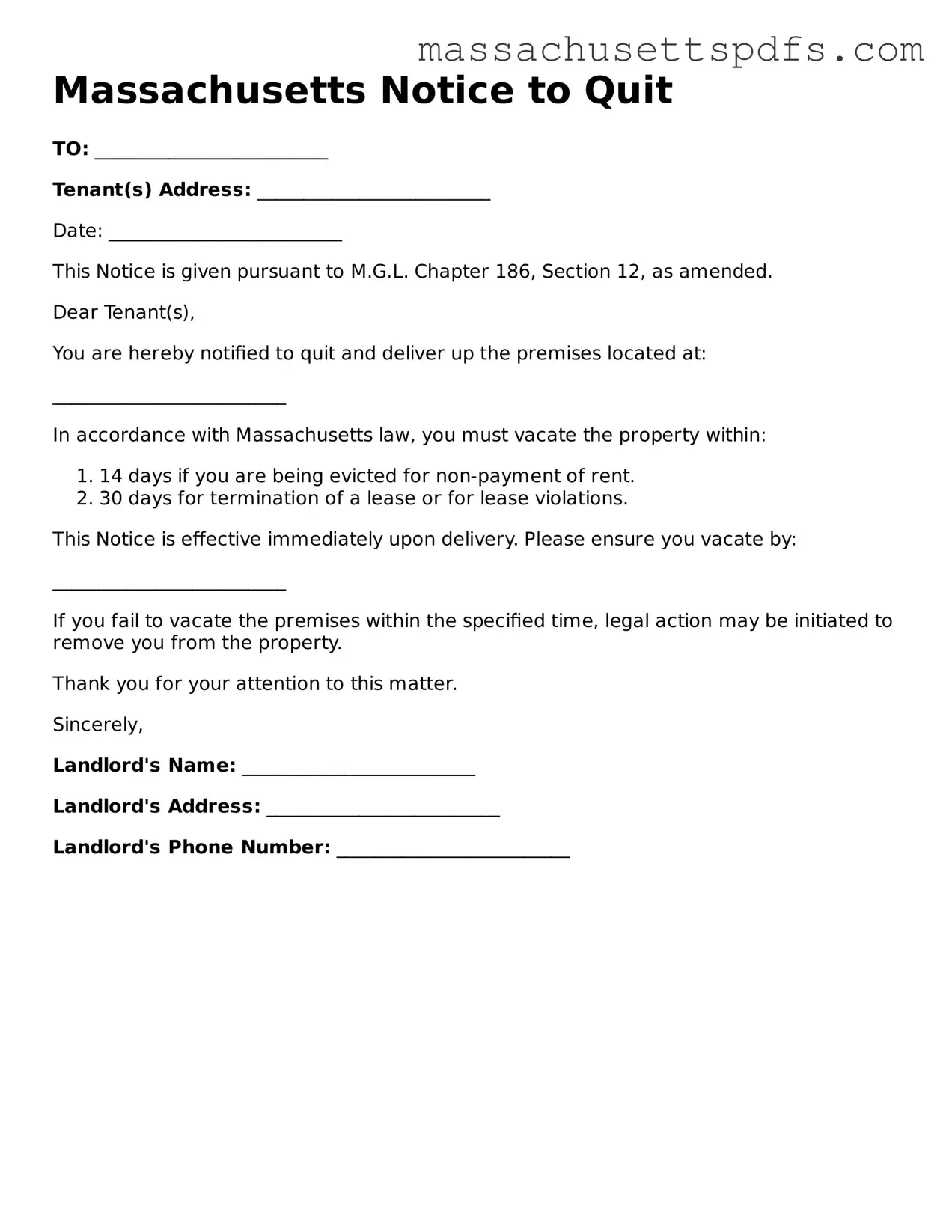Attorney-Approved Massachusetts Notice to Quit Document
The Massachusetts Notice to Quit form is a legal document used by landlords to formally notify tenants of their intention to terminate a lease or rental agreement. This notice outlines the reasons for termination and provides a specified timeframe for the tenant to vacate the property. Understanding this form is essential for both landlords and tenants to ensure compliance with state laws.
To fill out the Notice to Quit form, please click the button below.
Launch Editor Here
